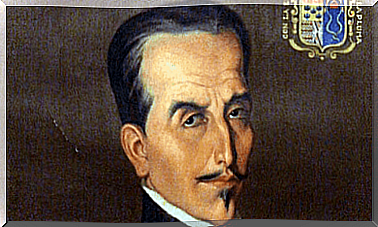Cognitive Bias: When We Don’t Think, We Make Mistakes
We make many decisions every day. Most of these we take faster than light, without really thinking about it. Rarely do we actually think about the consequences of every possible option. We choose almost blindly from the range of possible solutions. In some cases, especially when it comes to an important choice, we evaluate all the information at our disposal to choose the best possible option. However, there is something that affects the choices we make and the solutions we choose that we don’t often think about. That something is called cognitive bias, also known as ‘thinking error’.
However, cognitive bias and heuristic bias in themselves are not bad. In fact, one could even say that they are a kind of mental shortcuts. This may be a shortcut that can undoubtedly get us into trouble, but it is and remains a handy shortcut. We describe them that way because we use them to conserve mental energy (cognitive resources).
For example, let’s say you go to a bar and spend half an hour thinking hard about which drink to order. You think about the value of each drink individually and take your time to choose the best option.
After spending all that mental energy on it, you’re tired. You’ve wasted time that you could have spent on other things. Heuristic and cognitive bias speed up your train of thought. It saves cognitive resources that you can use for other more important tasks.
Two ways of thinking
According to Daniel Kahneman, there are two ways of thinking, called “thinking fast” and “thinking slow.” In the first system, ‘thinking fast’, our thoughts are on autopilot. This system normally operates on a subconscious level. Emotions play a big role in this type of thinking. As a result, they usually lead to thoughts overflowing with stereotypes.
The second system, “slow thinking,” has the function of guiding our intuition. Sometimes that helps, sometimes it leaves us out in the cold. This thought system built on an intentional set-up shows itself less often and requires more energy.
We do this kind of thinking in a conscious, logical and calculated way. It’s the opposite of quick thinking. Its primary function is to make final decisions. You could say it is responsible for observing and controlling the blind intuition that comes through quick thinking.
The first system prevails. The second system, on the other hand, seems to be quite lazy as to when it shows itself. Normally we let our ability to think quickly guide us. As you can imagine, this tendency has its drawbacks.
We jump to conclusions quickly and overestimate the importance of first impressions. We also confuse casual connections and relationships and place too much trust in what we already know and thus what is known. When we participate in quick thinking, we usually don’t think about the other information we have at our disposal.
Heuristic thinking
We describe heuristics as a shortcut for active mental processes. This is also a means that saves a lot of energy on a mental level. Because our cognitive (mental) capacity is not infinite, we divide our available resources. We mainly use most of this on things that take up the greatest amount of mental energy (such as worries, activities, people, and so on).
It’s easy to get on with your life without really paying attention. However, when the going gets tough and we get the feeling that something isn’t going to be easy for us, we deploy more of our cognitive resources. We pay close attention and see which way we go.
Common heuristics
- Availability heuristic. we use this to estimate the probability of an event. We base this estimate on information we already have (hence the name). For example, the amount of violence on TV is very high. That’s why people who watch a lot of TV think that the crime rate is higher than people who don’t watch much TV.
- Simulation heuristic. This is the tendency people have to estimate the probability of a particular event based on how easy it is to imagine. You believe that something is more likely when you can easily imagine it. For example, if there is a terrorist attack, it is easy to believe that the jihadists were responsible. That is easier to imagine than that another group was responsible for this. This is probably because other groups are less likely to carry out such attacks or their methods are different.
- Reference effect (‘anchor heuristic’). This is used to remove doubt. There is a certain reference point, the anchor, which we adjust to arrive at our conclusion. For example: my team won a big game last year. This year I believe we have an even better chance of winning, even though we’ve only won once so far.
- representation heuristic. This has to do with your deduction about the probability that a stimulus (person, action, event) belongs to a certain category. For example, you know someone who was very good at chemistry in high school. Years later you see this person in a white coat. You assume your acquaintance has become a scientist, not a butcher — even though you can’t be sure at all.
cognitive bias
Cognitive bias is a psychological effect that affects your thinking ability. Like heuristics, as described above, such a bias saves on your cognitive energy. However, this bias can cause you to make serious mistakes — but they can also be very helpful in making effective decisions quickly.
Cognitive bias: common examples
- Confirmation bias. This describes the tendency to examine or interpret information in such a way that it confirms what you already considered ‘true’. For example, if you invest in the economic stock market, you will look for articles and blogs that confirm your assumptions about your investment. You will likely ignore a comment if it contains an opinion that differs from yours. Even when you buy a new car, you will seek out opinions that highlight the positive sides of the car. That way your choice is validated.
- False consensus effect/bias. This is the tendency to believe that your own opinions, beliefs, values, and habits are more normal in the general population than they actually are. For example, if I am against the death penalty, most people in my country will think the same.
- Fundamental attribution error. This is also known as the correspondence bias. There is a tendency to overemphasize personality-based explanations for behavior in others. If a classmate fails an exam you took under the same circumstances, you’re more likely to attribute his failure to his “laziness” than to the fact that he might just be having a bad day.
- Hindsight bias . This is the tendency to view certain events as predictable in retrospect. For example, if a friend gets fired, it’s easy for you to say afterwards that you knew this was going to happen because the company was struggling financially. However, before this happened you probably could not have imagined this at all.
Making effective choices
Now that you are familiar with the concepts of heuristic bias and cognitive bias, you can start making choices more effectively. Even though it is sometimes difficult (and sometimes impossible) to avoid, you can reduce the amount of thinking mistakes you make. This can be done by reading up on this — as you just did — and developing an understanding of how this bias works.
Considering alternatives and looking for information that contradicts your own beliefs are good ways to reduce the effect of cognitive biases. And as a bonus, avoiding these biases can make you more creative in your thinking.









